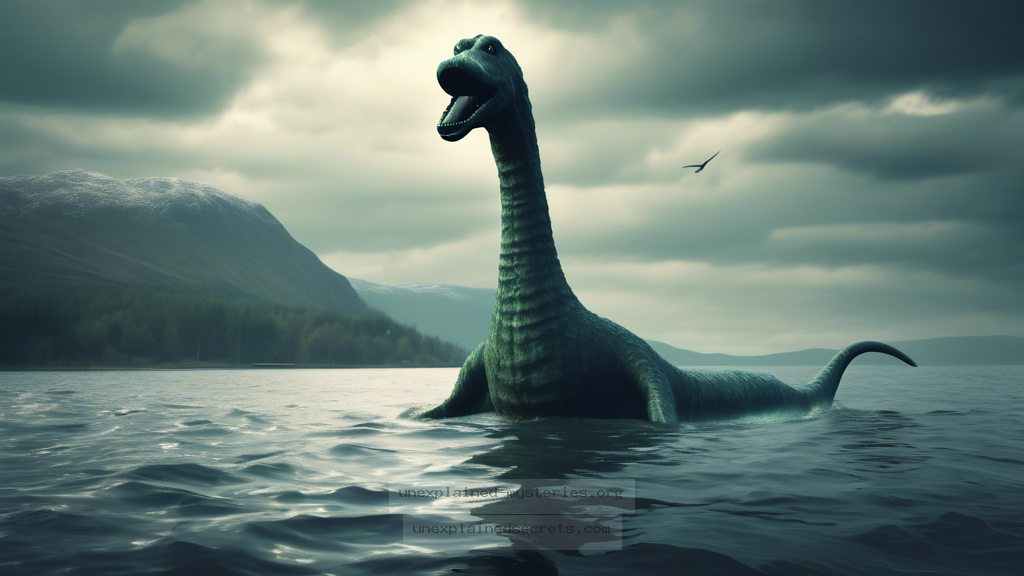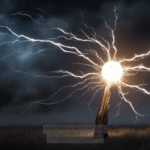What Are the Most Compelling Sonar Discoveries That Might Prove the Existence of the Loch Ness Monster?
What Are the Most Compelling Sonar Discoveries That Might Prove the Existence of the Loch Ness Monster?
The Loch Ness Monster, affectionately known as “Nessie,” has become one of the most famous cryptids in the world. For nearly a century, this enigmatic creature has captured the imagination of both locals and tourists, fueling countless investigations and debates. Despite numerous eyewitness accounts and anecdotal evidence, the question remains: is there any scientific proof of Nessie’s existence? Among the many investigations, sonar discoveries stand out as potential evidence. This post will delve into the most compelling sonar findings related to the Loch Ness Monster, exploring their implications and what they mean for the ongoing search for this elusive creature.
The Historical Context of Loch Ness and Its Mysteries
Loch Ness, located in the Scottish Highlands, is a large freshwater lake renowned not only for its stunning scenery but also for its legends. The first recorded sighting of the Loch Ness Monster dates back to 565 AD, when Saint Columba allegedly encountered a water beast while crossing the loch. However, it was not until the 1930s that Nessie gained international fame, largely due to the notorious “Surgeon’s Photo” taken in 1934. This photo purportedly shows a large creature in the loch, but it was later revealed to be a hoax.
Despite the controversies surrounding early sightings, interest in the Loch Ness Monster surged, leading to various scientific investigations. The introduction of sonar technology in the 1950s opened new avenues for exploration, allowing researchers to scan the depths of the loch in search of evidence. This technology would lead to some of the most compelling discoveries yet, reigniting hope among believers and skeptics alike.
Core Concepts of Sonar Technology
Sonar, which stands for Sound Navigation and Ranging, is a technique that uses sound propagation to navigate, communicate, or detect objects underwater. The basic principle behind sonar involves sending sound waves into the water and analyzing the echoes that return. This technology can reveal the size, shape, and distance of underwater objects, making it an invaluable tool for marine research.
There are two primary types of sonar: active and passive. Active sonar emits sound waves and listens for their echoes, while passive sonar only listens for sounds made by objects in the water. In the context of Loch Ness, active sonar has been the preferred method for detecting potential creatures lurking beneath the surface.
Notable Sonar Discoveries in Loch Ness
Throughout the decades, several significant sonar expeditions have taken place at Loch Ness, resulting in intriguing findings that have fueled the legend of Nessie. One such expedition occurred in 1987, known as “Operation Deepscan,” which involved a fleet of boats equipped with sonar technology scanning the loch in a coordinated effort.
Another notable instance occurred in 2003 when the Loch Ness Project utilized sonar to map the loch’s depths. Their findings revealed unusual sonar traces that did not correspond to known fish or geological formations. These anomalies reignited speculation about the presence of a large, unidentified creature in the loch.
Scientific Implications of Sonar Evidence
The sonar discoveries at Loch Ness have led to various scientific implications. One of the most significant is the possibility that these sonar anomalies could represent a large, unidentified species, potentially a prehistoric creature like a plesiosaur. While the concept of a surviving prehistoric species is often dismissed by mainstream science, sonar findings have kept the conversation alive.
Moreover, the data collected has provided researchers with insights into the loch’s ecosystem, revealing patterns of fish behavior and habitat use, which can help clarify whether the sonar readings indicate an unknown creature or simply large schools of fish.
Alternative Perspectives: Skepticism and Explanation
While sonar findings are compelling, skepticism remains prevalent in the scientific community. Many researchers argue that sonar anomalies can often be attributed to natural phenomena. For example, underwater currents, geological formations, and even man-made objects can create echoes that mimic the signatures of a large creature.
In addition, some skeptics point to the fact that no physical evidence—such as bones or remains—has ever been found to definitively prove the existence of Nessie. The lack of tangible proof continues to fuel debates between believers and skeptics.
Common Misconceptions about Sonar Findings
Many misconceptions surround sonar findings related to the Loch Ness Monster. One common fallacy is that sonar can provide definitive proof of the creature’s existence. In reality, sonar technology can only indicate the presence of an object, not its identity or origin. Moreover, the interpretation of sonar data can be subjective, leading to varied conclusions among different researchers.
Reality: Sonar detects objects but does not identify them definitively.
Another misconception is that sonar expeditions are solely focused on proving Nessie’s existence. In fact, many of these projects aim to study the loch’s ecosystem as a whole, providing valuable data for environmental science.
Best Practices for Investigating Loch Ness
For those interested in investigating the Loch Ness Monster, adopting best practices can enhance the validity of the search. Here are some key recommendations:
- Utilize a combination of technology, including sonar, infrared cameras, and drones, to gather diverse forms of data.
- Conduct thorough research on the history of sightings and previous investigations to inform your approach.
- Collaborate with local experts and scientists to ensure that the investigation is grounded in sound methodology.
- Maintain an open mind while remaining critical of the evidence collected, acknowledging the potential for both natural and extraordinary explanations.
Future Developments in Loch Ness Research
The ongoing research into the Loch Ness Monster is evolving with advancements in technology. Recent developments in underwater drones and remote sensing technologies hold promise for more comprehensive exploration of the loch’s depths. These tools can provide higher-resolution imaging and more accurate sonar data, potentially uncovering new evidence related to Nessie.
Furthermore, genetic studies are being employed to analyze water samples from Loch Ness, searching for DNA traces of unknown species. This method could provide groundbreaking insights into the loch’s biodiversity and whether any undiscovered creatures reside within its waters.
Conclusion: The Quest for the Loch Ness Monster
The mystery of the Loch Ness Monster continues to captivate the public’s imagination, fueled by sonar discoveries and ongoing investigations. While skepticism remains, the sonar findings from various expeditions provide intriguing possibilities for the existence of an unidentified creature in Loch Ness. As technology advances and new research methods emerge, we may be closer than ever to uncovering the truth behind this legendary cryptid. Whether Nessie is a figment of folklore or a real creature remains an open question, but the quest itself is a testament to humanity’s enduring fascination with the unknown.
Other Articles
Recent Posts
- What Happened to Flight MH370? The Conspiracy Theories That Still Haunt Us
- What Secrets Lurk Within the Walls of the Infamous Trans-Allegheny Lunatic Asylum?
- What Evidence Supports the Existence of Bigfoot in the Pacific Northwest?
- What Happened to the Indus Valley Civilization? Unraveling the Mysteries of Ancient Urban Life
- Can Telepathy Be Scientifically Proven Through Laboratory Evidence?







